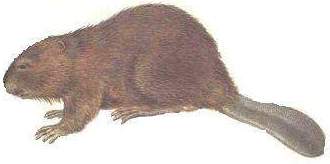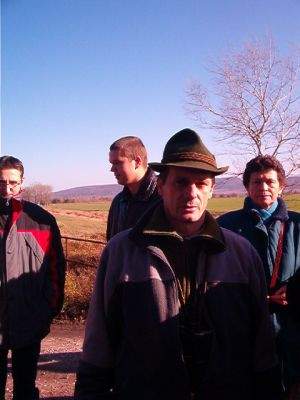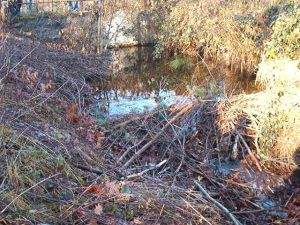
Slovak nature yesterday and today
![]()
 |
|
|
Mr. Ľudovít Šurina, the woodman is right, anyway! |
|
|
In the west of Slovakia in the river basin of Morava and in Moravia there have been found beavers in a greater amount for about 10 years. At present some problems with beavers are already registered also on the Austrian side of the river Morava to the distance about 30 km off the river.The beaver usually builds up such water areas that overflood inhabitants living near the river. |
|
|
In the hunting ground of the army forests in Plavecký Peter woodmen have already registered about 50 beavers. This locality is famous for peat-bogs to which there flows through artificial channels and natural brooks water so clean that it can be drunk. The beavers use wood to bar the narrow channel in order to lift up the water level so the water stops flowing into the peat-bogs – they would get dried in a couple of years. A lot of trees have got dried already, the rest have found themselves rooted in artificial , shallow beavers´ lakes and are rotting |
|
|
A beaver digs dens in the ground in such a way that the entrance is under water but the den is in dry soil above water. And because a beaver wants to flood the entrance to the den with water, it builds dikes to lift the water level and in that way it floods the surrounding and causes harms as a result. In wider bogs it builds „ huts „ –small, dry islands in the deep water. It is able to construct a system of numerous dikes and consequently to regulate the water level. |
|
|
Greenpeace organizations were given money from the European committee with the intention to create better conditions for beavers than they have nowadays. In our country there is no natural enemy of beavers and so it can be reproduced very quickly. |
|
|
Food – it is a rodent which eats basically plants.The woodman reminded us to watch the trees that serve as its food. A beaver not only bites soft trees such as a willow, but it also likes oaks that were planted by the woodman along the artificial channels.It carries trunks also with smaller branches into the river and it bites them in winter. |
|
Update 13. May 2005
Ing. Lýdia Haliaková




